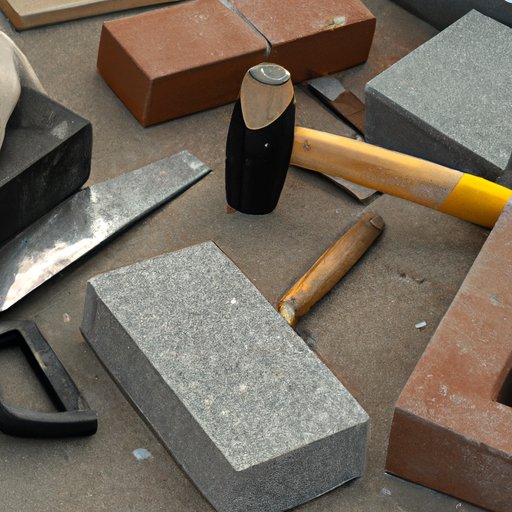
Introduction
Paver installation is a great way to spruce up your outdoor space and add value to your home. In this article, we’ll cover everything you need to know to successfully install pavers, including step-by-step instructions, tools and materials, DIY vs professional installation, choosing the right pavers, maintenance and upkeep, and the advantages of pavers. Whether you’re a seasoned DIYer or a novice looking to learn a new skill, this guide has got you covered.
Step-by-step guide
Before starting the installation process, it’s important to prep the area by removing any existing materials, like grass or sod. Next, you’ll want to lay down a layer of crushed stone for the base layer, followed by a layer of sand.
To lay the pavers, start at a corner of the area and work your way outwards, using a level to ensure the pavers are even. Leave a small gap between each paver for sand to be added later. Once the pavers are all laid, add sand to the joints and use a compactor to level and compact the pavers into place.
To achieve a professional look, consider choosing a pattern for your pavers. Edging can also help create a neat and clean appearance. If you encounter issues like unevenness, there are solutions, like using additional sand or adjusting the pavers by hand.
Tools and materials
Basic tools needed for paver installation include a shovel, level, and compactor. Materials needed include crushed stone for the base layer, sand for the surface layer, and pavers. Some recommended brands include Belgard and Unilock.
DIY vs professional installation
Doing a DIY installation can save you money, but it’s important to understand the following: a novice can do most tasks, but more complicated tasks are better left for professionals. If you’re wanting to estimate cost savings, consider the complexity of the project, and the availability of tools. It is important to weigh the potential risks before jumping into a DIY installation. Hiring a professional might be more expensive but it could save you potential headaches if something goes wrong.
Choose the right pavers
The right type of paver depends on the project at hand. Look for pavers that complement your surrounding area. It’s also important to choose pavers that are durable enough to withstand the elements. Calculate the number of pavers needed by measuring the area to be covered and considering the size of the pavers you’ve chosen.
Maintenance and upkeep
Prevent common issues by keeping up regular maintenance activities, like cleaning and sealing your pavers. Repairing damaged pavers should be done immediately to prevent further damage. Weeds and erosion can also be mitigated by regular upkeep.
Advantages of pavers
Pavers offer a variety of advantages over other materials like concrete or wood. They have a long lifespan, are environmentally friendly by allowing for water drainage, and are visually appealing for any outdoor space. You can also use them in various projects, like patios, sidewalks or driveways.
Conclusion
Now that you have an idea of the paver installation process, it’s time to get started on your own project! Remember to follow each step carefully, choose the right tools and materials for the job, and practice proper maintenance and upkeep. By following this guide, you can have a professional-looking paver installation without hiring a professional.




